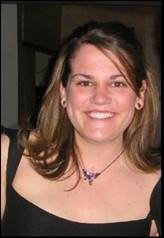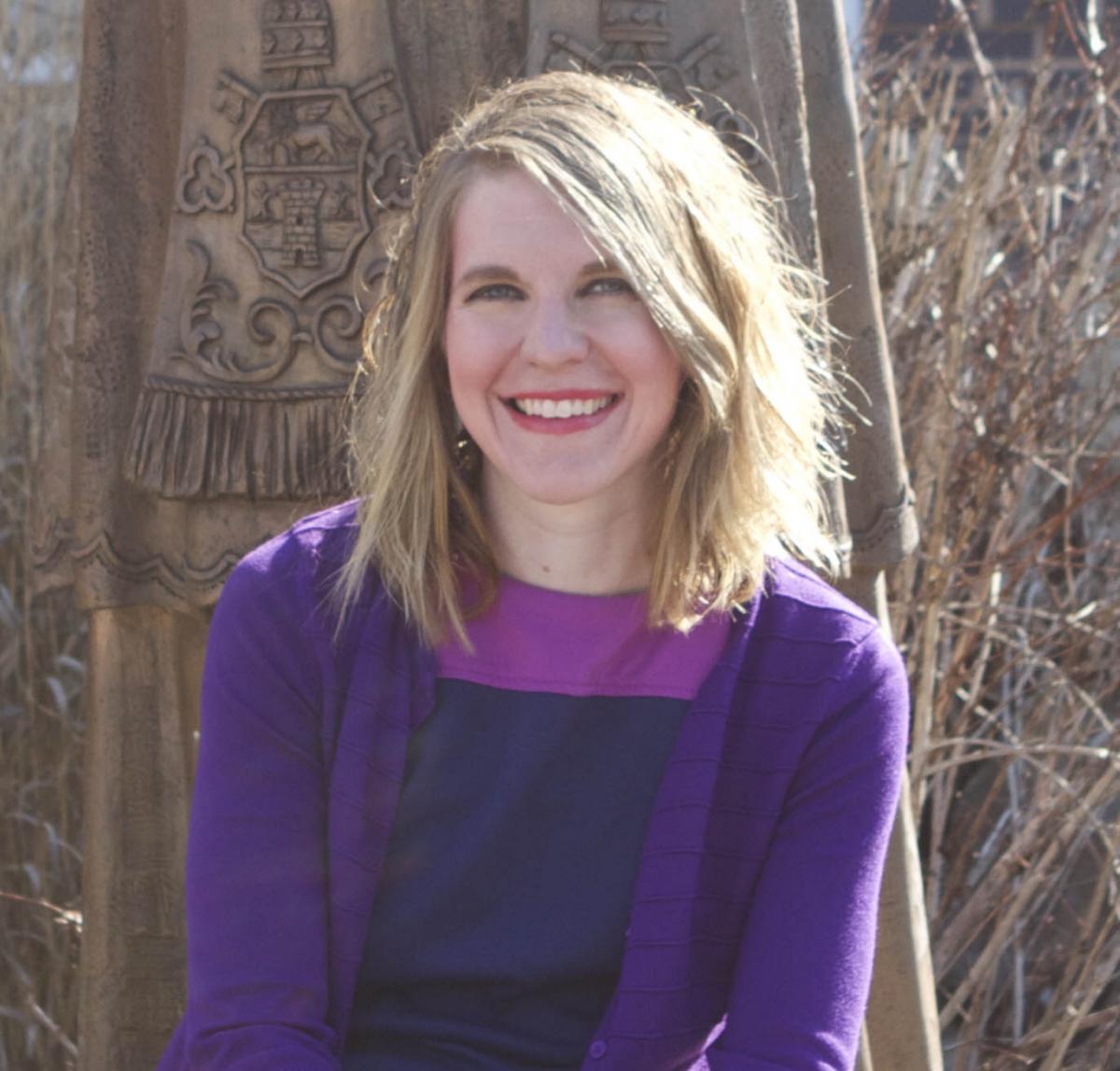For over a decade, NCSE has run an annual rafting trip down Grand Canyon as a counterpoint to the numerous creationist rafting trips that use Grand Canyon as a showcase for what they claim as the “evidences” of Noah’s Flood. Our NCSE trip presents the real science of the Canyon while addressing why the claims of creationists simply do not match what we see in the rocks.
Several year ago NCSE began offering teacher scholarships with the idea of helping science teachers experience the wonders of Grand Canyon, and then carry that experience back to the classroom, where students can learn from someone who has experienced this great national park first hand. If you would like to help sponsor a teacher, you can donate here.
This year NCSE has picked two teachers, Marie Story from South Dakota, and Robyn Witty from Indiana. We asked them about their experiences teaching in an environment where scientific facts are sometimes regarded as “controversial.”
Q&A with Marie Story
Q: You’ve worked as a committee member to write South Dakota science standards. In your experience teaching, and in talking to your colleagues, how important is it that science standards reflect the best science possible?
A: Science is deeply rooted in answering questions with researched, testable data. Traditionally, we gave students information about science, almost a history of science, as opposed to having them engage in authentic scientific experiences. It was like having students read about basketball to learn about it without ever being able to hold the ball. The new standards encourage students to ask their own questions and to find their own answers and then to use different venues to share that information.
Q: One change made to South Dakota science standards was the omission of the word “evolution.” How important is it for teacher to have that word in the standards, especially if the teachers feel uncertain about raising a potentially controversial issue in class?
A: When we omit the word "evolution" from the standards, it shifts the repercussions of teaching evolution from the state to the individual teacher. This leaves every teacher in a position where they must now defend themselves, which is a lot harder, riskier, and redundant to do individually.
Q: You had success teaching evolution “backwards,” by first presenting evidence to students and only later explaining that this is the evidence for evolution. How did students react to that approach?
A: Many students have misconceptions about what evolution is. They come with their minds already shut out to understanding what evolution is and refuse to listen because they think that it is a matter of belief. As a result, I often teach evolution backwards. We look at fossil evidence. We look at adaptations over time. We look at possible adaptions happening in their area now. Students begin to draw their own conclusions and recognize the patterns that Darwin and Wallace once found.
Q: Many of your students have come into the classroom saying, “I didn’t come from a monkey.” What’s your response to this statement?
A: When my students tell me that they did not come from a monkey, I tell them that they are absolutely right, they did not. This opens the doors to an awesome classroom discussion about misconceptions about evolution and to look at evidence to support a claim.
Q: Many students might get the idea that science says humans came from monkeys because of that famous illustration, showing a monkey on the left changing (or marching) into a human on the right. Is that diagram itself to blame?
A: When you search for images of science, often times the first images to pop up are the periodic table, beakers, the atom, and the illustration of a monkey transforming into a human. These images are generalizations, and we know that often, generalizations are wrong. The atom model, for example, is not what scientists actually think an atom looks like. The evolution model is not what scientists really think evolution looks like. They are an over-simplification of a concept that is very complex. It can be a catalyst to a discussion and an opportunity to learn, but often times, its looked at as a CliffsNotes version of the Origin of the Species. There are no shortcuts to understanding evolution, and one diagram does not do it justice.
Q: For your students in South Dakota, how have you made science relevant to them and the world around them?
A: It is incredibly important for students to scaffold new information onto older information and experiences as a means to fully understand the material and remember it. To do so, I look at science that relates to their lives. We study and participate in local science studies and they create their own. This gives students ownership to the material and helps them to build on prior knowledge and interests.
Marie Story
Physical Science
Whittier Middle School
Sioux Falls, South Dakota
Q&A with Robyn Witty

Q: Students today come to the classroom with opinions formed from unvetted, non-scientific digital material, particularly from YouTube and Facebook. How have digital media posed a challenge for you as a science teacher in terms of the students’ science literacy?
A: A 2016 Pew research study found that over half of all adults receive at least a portion of their total news intake via a social media platform. The volume of unvetted, non-scientific digital material on Twitter, Facebook, and YouTube is astounding. Students are faced with a barrage of information which may be strictly opinion based without the checks and balances of peer reviewed science. Many students are ill-prepared with the skills necessary to wade through this ever-expanding deluge of information, and believe most scientific information on the internet is accurate.
One of my favorite resources, in thinking about the scientific literacy skills I want my students to have, is the American Association for the Advancement of Science’s Benchmarks for Scientific Literacy. It outlines what scientific literacy skills every student should understand K–2, 3–6–8, and 9–12. One of the scientific literacy mindsets students are asked to develop in grades 9–12 is a mindset of skepticism. By teaching our students to be skeptics, and understand how peer-reviewed science is protected against distortion, correlation, and bias, we can prepare them to be scientifically literate adults.
Q: Climate denialists and creationists often use the phrase “critical thinking” to argue for inclusion of their non-scientific ideas in the science classroom. How do you as a teacher use real critical thinking to help your students understand the world around them?
A: Critical thinking in science encompasses an understanding of the nature of science, what is a reputable source, and what it means to be peer reviewed. I foster critical thinking in my classroom by performing an extensive nature of science unit, to ensure my students understand these concepts prior to delving into any other content.
I also encourage critical thinking by using a wide range of hands-on activities that relate to their real lives, and require them to make connections to other fields of study (such as math, social studies, and technology). I have also moved away from cookie-cutter/cookbook labs. Students may have a set of basic instructions for how to run a test, but then they must present and analyze their data within their own lab books.
For example, my students test their own vehicles and our school buses to determine how vehicle type impacts the concentration of carbon dioxide emissions. Additionally, they watch cloned lilac bushes on campus for blooming times, and compare this information with known data sets to determine if global climate change is impacting plant phenology. For climate and evolutionary science to be real to my students, they have to be able to touch it, discuss it, and apply it.
Q: In addition to being an educator, you have worked in scientific research labs. How has your experience as a researcher informed how you teach your students?
A: My lab experience gives me first-hand experiences with the nature of science, and how peer reviewed science works. I am able to share stories from my lab experience, about quality assurance, accuracy, and failed or successful pharmaceutical studies.
It gives me a strong understanding of how critical inquiry labs are in the high school setting. I think students have a notion that a lot of science is already figured out, and they are just repeating a cook book experiment with little new left to discover. Students are more likely to fall in love with science if their natural sense of curiosity is activated. They also better understand science as a process, if they have to walk through the experimental design process themselves.
Q: You have taught in Catholic schools. Pope John Paul II explicitly endorsed evolution, and Pope Francis has written about the dangers of climate change in his encyclical Laudato Si’. Do you find that all your students therefore by default accept evolution and climate change?
A: Not necessarily. Not all students attending our high school are Catholic. Many choose our school because of its prestige for academic excellence. And even my students who are Catholic vary in their knowledge of the church’s support of scientific concepts like climate change and evolution.
I have noticed increasing acceptance in our latest generation of students, as the church has continue to clarify its acceptance of both concepts. Both my biology and environmental science students start their climate change and evolution units with an examination of the Catholic church’s teaching. My environmental science students read significant excerpts from Laudato Si’. Additionally, Care for Creation was also added to the spiritual and corporal works of mercy this year. At the World Day of Prayer for the Care for Creation, Pope Francis shared that he "calls all Christians to be stewards of creation and thank God for the wonderful handiwork which he has entrusted to our care." He was also quite firm in saying that "when we hurt the Earth, we also hurt the poor and thus commit a sin against creation, against the poor, and against those who have not yet been born."
I do feel empowered that the Catholic faith has made its stance on evolution and climate change so clear. It gives me definitive documents and statements to use for support. The most powerful persuasion for my students is examining local, relevant, and hands-on evidence. A strong nature of science unit and examination of Church acceptance simply sets the stage for the unit.
Q: Why is it so important to avoid classroom debates about whether or not evolution and climate change are real?
A: It is important to avoid credibility debates about evolution and climate change because these two pieces of content are not scientifically debatable. 97% of climate scientists agree that global average temperatures and atmospheric carbon dioxide concentrations are increasing, and humans are at fault. Organizations like NOAA, NASA, and the AMA have issued public statements confirming the same stance. There is additional scientific consensus that humans and other living things have evolved over time.
The hosting of a debate would bring in biased, inaccurate information, which could foster the ingraining of scientific misconceptions as facts. It presents evolution and climate change as being uncertain, and with the mountain of peer-reviewed scientific evidence supporting the two, that is not an accurate representation.
Robyn A. Witty
Roncali High School
Indianapolis, Indiana
